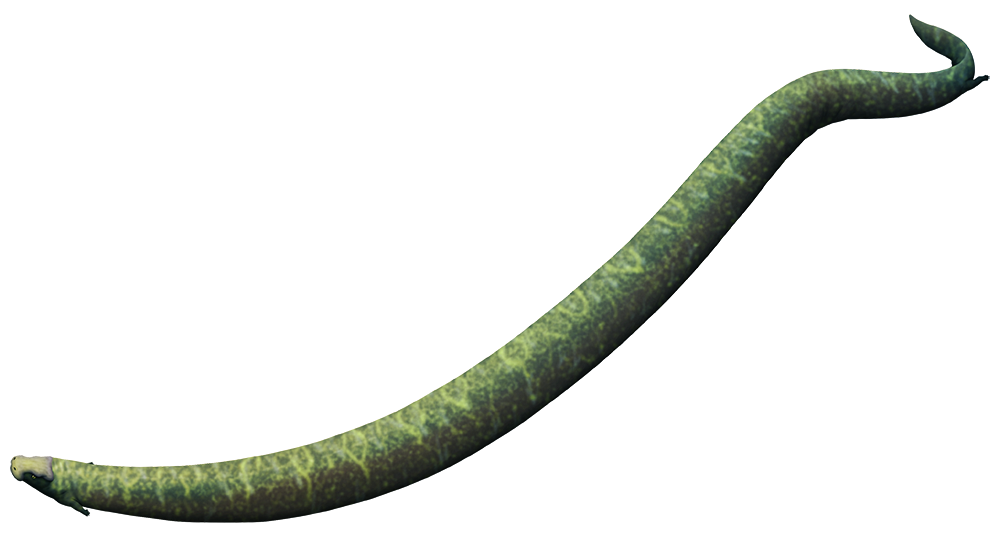The lysorophians were a group of Carboniferous and Permian tetrapods with highly elongated bodies and tiny limbs, usually thought to be part of the lepospondyl amphibians – but some recent studies have instead placed them and some of their close relatives as possibly being very early members of the reptile branch of amniotes.
Brachydectes newberryi here is one of the best-known lysorophians, represented by a good amount of fossil material compared to many of its relatives. Living in the Midwestern United States during the late Carboniferous and early Permian, around 310-290 million years ago, it had a proportionally tiny head and reached lengths of around 60-70cm (2′-2’4″).
Its wide shovel-shaped snout and thickened reinforced bones around its braincase suggest it was adapted for headfirst digging, and some specimens have actually been found preserved inside their burrows. The roof of its skull also developed extensive “sculpturing” as individuals aged, with juveniles having smooth bone surfaces and larger adults having a distinct rough bumpy texture.
So I’ve depicted it here with a speculative keratinous “head shield”.

